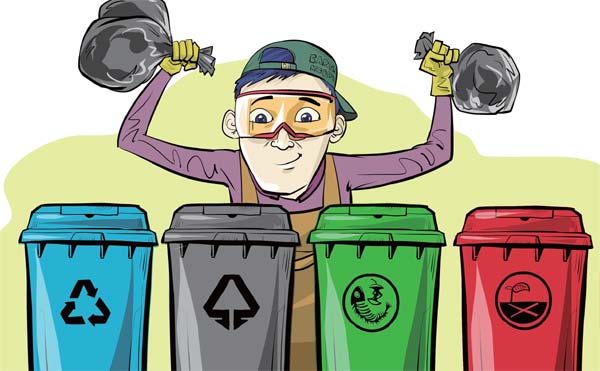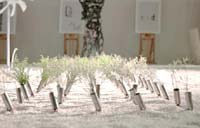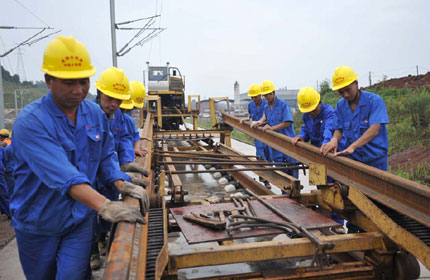Time to trash waste problem
Updated: 2014-06-12 13:38
By Joshua Shi (Shanghai Star)
|
|||||||||||
 |
|
Zhang Chenliang/Shanghai Star |
| Call to turn trash into treasure |
| Keep a kitchen diary and prevent waste |
Throw it, dump it, pile it, bury it and burn it — this is the easiest yet most expensive way to deal with garbage, at the cost of extensive land masses and a polluted environment.
The burying of garbage occupies open land and possibly creates harmful substances, which will permeate land and water. Burning it generates poisonous chemical emissions, such as dioxin and sulfur dioxide, which are hazardous to people's health.
The correct way out of this problem is the careful and meticulous classification and recycling of garbage. There is widespread news coverage on Chinese social media about how garbage is meticulously classified in Japan. But why have we forgotten our own tradition?
At a small town in Shanghai's rural Chongming Island where I was born, I remember until the early 1980s there was a government-run recycling station for production materials.
The station collected everything from waste paper to glass bottles, from cloth to a variety of plastic products, from broken washbasins and other metal products to the common nail.
In those days, when the average monthly salary for a worker was less than 100 yuan and a farmer earned even less, there were not so many dazzling products for consumption as you see in the supermarkets across the city today. People led a simpler and thrifty life. As a result there was far less garbage generated.
|
|
|
Joshua Shi was a former English teacher, reporter and magazine editor, and the Shanghai native now works as a marketing and PR professional. He is a freelance writer, translator and artist. |
At home we classified and packed the waste paper and waste cloth and saved all the glass bottles in one basket. There was actually not much garbage, but when we saved enough we would take it and sell it at the recycling station. These materials were not even called "garbage", they were recyclable and reusable materials for production! And the station was very clean and had no smell at all. Different garbage was piled in each place to be further packed for transportation and recycling.
At that time, nothing was wasted, boys collected cigarette packs and folded them into cubes and played games with them. Even the aluminum toothpaste shell was worth 1 fen (cent), with which I could buy a piece of candy from the nearby shop.
Thanks to the opening-up reform and a robust economy, we are enjoying a good life and keep consuming products, so we keep generating garbage. It seems we have forgotten some of our good traditions, and few people remember we once had a meticulous classification of garbage in the recycle station.
It is high time we set up a recycle station in every residential quarter, in every street, across the city and the country. This is the only way out for handling the garbage without posing danger to the environment and our health. For the sake of ourselves, our children and our children's children, let's take action NOW!
Related Stories
Unwilling to be a silent victim of waste 2013-05-28 13:50
Keep a kitchen diary and prevent waste 2013-03-06 09:07
Turning waste paper into valuable products 2013-01-16 15:31
Call to turn trash into treasure 2013-12-08 07:06
Tourists besiege Palace moat with trash 2013-02-27 09:29
Today's Top News
Former military leader expelled from CPC
China's top banks account for 32% of global earnings
HK chief poll has 'no legal standing'
Transformers 4 breaks records
China to increase personnel for peace
Over 1,200 Chinese evacuated to Baghdad
World Cup can damage health
Transformers helps growth in China
Hot Topics
Lunar probe , China growth forecasts, Emission rules get tougher, China seen through 'colored lens', International board,
Editor's Picks

|

|

|

|

|

|








